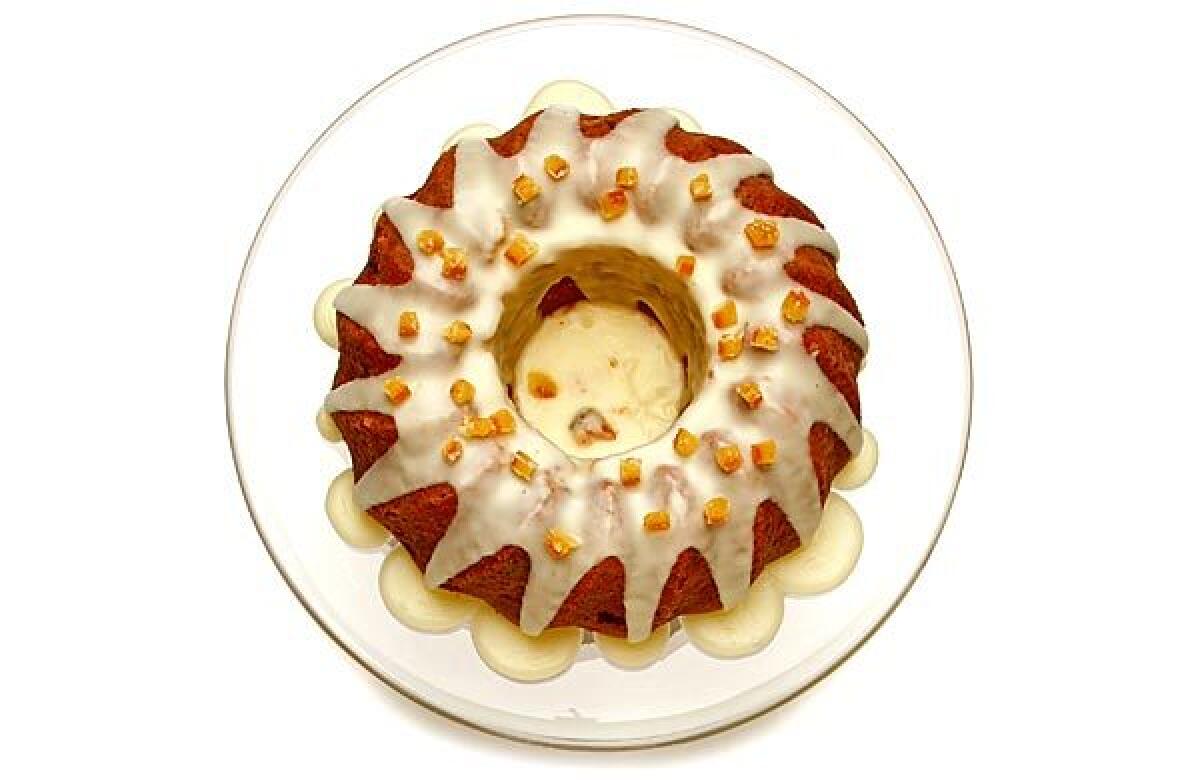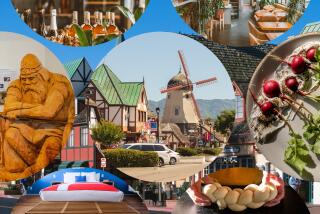Foods at the heart of Easter celebrations in Scandinavia

Reporting from Copenhagen — — Easter in Scandinavia, like many holiday celebrations in this part of the world, is a colorful patchwork of customs, including bits and pieces of a lot of things: Passover, the death and resurrection of Jesus Christ, the Easter bunny, cute witches, huge amounts of oranges and the occasional shot of aquavit, all of it combined into what can be described only as an exhilarating and slightly confusing Easter stew. But one thing is clear: Easter in Scandinavia is very much about food.
There isn’t a single homogeneous Easter food tradition that spans all of Norway, Denmark and Sweden. Each country has its own take on what to serve, even if lamb roasts and eggs seem to find their way into most of their Easter dinners.
The Norwegians focus on two things during Easter: lambs and oranges. Where the lamb part comes from is pretty much self-explanatory — Jesus is often referred to as agnus dei, or lamb of God. The orange part isn’t so readily apparent. But what might sound like a bizarre joke actually isn’t.
At Easter, Norwegians stuff themselves with what doesn’t even grow in the country — in fact they eat more than three times as many oranges during Easter as they do during the rest of the year, 20 million pieces of fruit in just a couple of days and a couple of million tangerines and clementines on top of that (Norway has just 5 million inhabitants).
Your photos: Show us the special foods that you prepared for your Seder or Easter menu.
This citrus fruit bonanza is believed to have its origin in the fact that for many years oranges were available in Norway only during late winter, when they had just been harvested in southern Europe. The best ones, the sweetest and juiciest, came right in time for Easter, and quickly became a symbol of the sunny days that were waiting ahead after a long and depressingly dark winter. These days, no self-respecting Norwegian would even dream of not eating a bucket or two of oranges during Easter.
In Denmark and Sweden, instead of oranges, most people turn to a traditional smorgasbord with pickled herring and gravlax, spruced up with a few Easter treats such as lamb roast, eggs and marzipan candies. Everything is accompanied by — what else? — the occasional shot of aquavit.
But though the Swedes eat their smorgasbord as a buffet with many small dishes, the Danes tend to do what they always do — put their food on bread. It is a law of nature that you cannot get Danes to eat a buffet without turning it into a veritable smørrebrød-feast, where every dish is eaten with a specific type of bread and specific trimmings.
It is important to understand that white bread is for salmon and shrimp, dark rye bread for herring and anything with meat — and that mayonnaise and remoulade sauce are not to be used indescriminately. (So if you ever find yourself at a smørrebrød table in Denmark, asking your host what goes with what might be a good idea to avoid eternal culinary shame.)
To understand the history behind Scandinavian Easter celebrations, we need to travel back in time. When the First Nicean Council in AD 325 established when Easter would be celebrated, Scandinavians were oblivious to the Easter of the southern parts of Europe and the Holy Land. During the Roman Empire and early Middle Ages, they were still very much pagans, believing in Valhalla, Asgard and Norse gods Thor, Odin and Freya. Most seasonal “holidays” were linked to the agricultural year — harvest and sowing — and the Christian Easter was nothing the northerners paid much attention to. It did, after all, take Christianity almost 1,000 years to break into Scandinavia.
And when it finally did, the Catholic Church realized that simply eliminating all the pagan customs and replacing them with Catholic ones could be devastating to the progress of Christianity in the region, potentially scaring people back to the gods of the Asgard. So instead it let many of the old traditions live, in one form or another.
Easter was one of those celebrations, where the old custom of welcoming spring was delicately merged with the Christian celebration.
So where do the witches come in? In today’s Scandinavia, the tradition is now considered quite sweet, but it has a dark background. During the 17th century witch hunts in Sweden, more than 300 women were persecuted and burned at the stake for supposedly having partaken in the Devil’s Feast at Blocksberg — an Easter gathering to feast on delicacies such as frogs, bugs and snakes and dance with Lucifer himself.
The sad destiny of these women has today become a rather innocent Halloween-like part of Swedish Easter celebrations. Youngsters dress up as cute little witches with red cheeks and go door to door asking for candy (before they are, as folklore would have it, off for Blocksberg on their brooms).
Irrespective of traditions and religions, food has been an essential part of Easter celebrations in Scandinavia throughout history as it has been elsewhere. And by making a selection of Easter cakes and breads, you can tour the Scandinavian countries with the help of your kneading muscles and a hot oven.
Start in Norway, with a moist and sweet orange cake topped with preserved orange zest. It’s a simple bundt cake with chunks of bittersweet chocolate topped with a light citrus-y icing that makes a great kick start to spring.
On to Sweden for a traditional caraway cross — a classic Easter bread and predecessor to the legendary Swedish Lent bun semla. But while the modern semla is a decadent sweet meal in itself (picture something like a small hamburger bun filled with whipped cream), the caraway cross is more down to earth, with a hint of exotic spices — something delicately between cake and bread.
Finally, serve a dark and powerful Danish rye bread with a smooth Easter egg salad. Because the bread is made primarily with rye flour, it needs extended and repeated risings to develop its texture and flavor. Seen in most lunch boxes across the Lilliputian country every day of the week, it’s a must for Easter Sunday.
Oh, and don’t forget the aquavit.
More to Read
Eat your way across L.A.
Get our weekly Tasting Notes newsletter for reviews, news and more.
You may occasionally receive promotional content from the Los Angeles Times.










